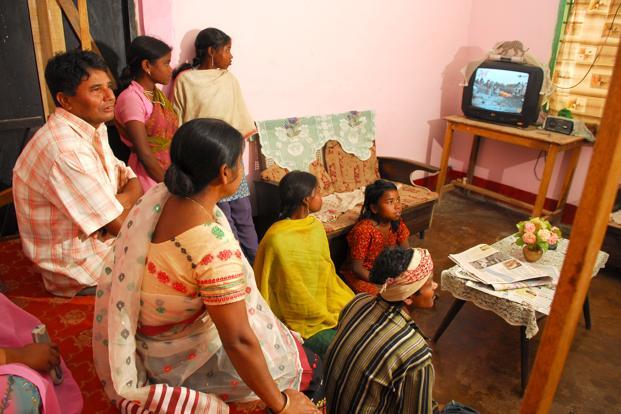
Sometimes you don’t need to look under rocks to find the objectionable.
The auction for T20 cricket’s Indian Premier League (IPL) broadcast rights, across geographies and media, has amplified the asymmetry in regulatory frameworks operating in the creative economy. The entire issue should also help triangulate a policy conversation between competition law, intellectual property rights and a sectoral regulatory/legislative narrative that has failed to comprehend the dynamics of India’s growing media and entertainment industry.
Star Group’s winning bid for IPL media rights was made via a transparent process. But the voluble protests preceding and following it have their roots in the Indian economy’s enduring legacy of cronyism and government patronage. Even if we move beyond the immediacy of the complaints and try to focus on the larger picture, the state of strife and conflict does underscore the need for regulatory reform in the creative economy. Specifically, it highlights three issues: multiplicity of regulators leading to lack of clarity on regulatory jurisdictions; need to grant supremacy to Indian Copyright Act—which governs creation, broadcasting and monetization of content—over a plethora of other laws and regulations that are stifling legitimate rights of content creators; and, finally, whether the 20th century mode of administered pricing for content produced in the private sector for sale in the open market can still work in the 21st century.
At the heart of the debate is the difference between monopoly over content and content monopoly. Monopoly over content arises when the content creator has the sole right, granted by law, to monetize the intellectual property embedded in the content for a specific period of time. Content monopoly arises when there is only one content producer in the entire industry and can hold distributors and consumers to ransom, which is clearly not the case in the India.
However, the extant regulatory framework seems to be ignoring these nuances and apprehension over content monopoly seems to have engendered systems that grant subordinate status to the Indian Copyright Act for broadcasting organizations, which is in contrast to global norms. Indeed, indications about content’s future were discernible in the IPL auctions: Facebook’s Rs3,900 crore bid for digital rights (for the Indian Subcontinent) trumped Airtel’s Rs3,280 crore and Reliance Jio’s Rs3,075.72 crore bids. Though Facebook eventually lost out to Star’s consolidated bid, the incident demonstrates how digital content is clearly the next battleground and how companies are according supremacy to content. It also brings into sharp relief the question of net neutrality and the role of gatekeepers. This then also begs the question: Is the current regulatory structure, erected to generate societal equity through mandated economic pricing, adequate and symmetrical for content delivered through cable/satellite and through digital pipelines?
The private television industry in India is of fairly recent vintage. Yet, a vice-like grip of regulators and regulations governs its creativity. The key regulatory institutions overseeing the industry are the ministry of information and broadcasting, the ministry of electronics and information technology, the Telecom Regulatory Authority of India (Trai), the Telecom Disputes Settlement and Appellate Tribunal, the Competition Commission of India, the department of industrial policy and promotion in the ministry for commerce and industry, the Intellectual Property Appellate Tribunal and the department of telecommunications in the ministry of communications.
Given the multiplicity of agencies, there is a wide and bewildering assortment of laws, rules and guidelines that govern this sector: Indian Copyright Act, Information Technology Act, Consumer Protection Act, Cable Television Networks (Regulation) Act, plus a labyrinthine web of regulations from Trai.
Historically, all attempts to establish an appropriate regulatory regime for the broadcasting and cable industry fell victim to political fragility of the 1990s, till the Centre reclassified broadcasting and cable services as telecommunication services in 2004 and appointed Trai as the designated regulator. Occasional attempts to create an independent broadcasting regulatory authority suffered pre-mature deaths due to political uncertainty.
With Trai and so many other agencies, acts, rules and guidelines at play—often at cross-purposes to each other—it is only natural that the playing field gets skewed in favour of those with unequal political bargaining power. In the sector’s infancy, the boundaries were stretched by organizations that employed musclemen and were friendly with political parties. Not all companies were born from this violent crucible, but some of the leading names in media and entertainment rose to prominence from this brutal churning. In addition, as various stakeholders have pointed out, the regulator’s lack of capacity has also led to the current regulatory distortions.
According to the KPMG India-Ficci report on Indian media and entertainment industry, 2017, Trai’s March order on inter-connect and pricing of channels may lead to a decline in revenue for broadcasters and might even result in an increased monthly outlay for many subscribers, thereby defeating the very purpose of the pricing model. Clearly, it is time to either upgrade Trai’s capacity or to even start thinking again of an independent and separate broadcasting regulator.
[“Source-livemint”]




